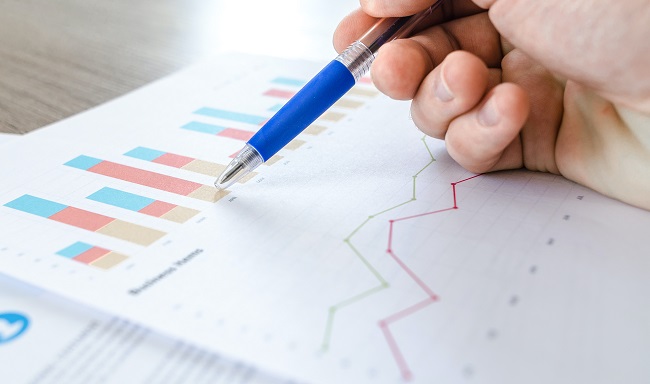by Jason Xavier, Head of EMEA ETF Capital Markets, Franklin Templeton Investments
GOODBYE 2020!
Alongside the usual start-of-the-year market prognoses, there are many wider questions on all our minds. When will we all fully return to work—and will it be the same as before? Will we still congregate at the water cooler? When will a holiday look and feel normal? When will the freedoms we have all taken for granted return?
In the short term, the start of 2021 still looks challenging as second waves of COVID-19 surge through the United Kingdom, Europe and the United States. However, vaccine rollouts look promising, and optimism for a potential return to normality later in 2021 provides hope.
While no one could ever have predicted the events of last year, let’s focus on the outlook for exchange-traded funds (ETFs) for the year ahead.
Looking back at 2020, it was actually a great year for ETFs, with global inflows surpassing US$750 billion for the year and global assets under management (AUM) growing by over 30%.1 Additionally, in Europe, it was the third-best year on record for inflows, with almost US$120 billion net into European-domiciled ETFs.2 Clearly, the momentum and tailwinds continue to be strong for ETFs globally. Below are three key trends in ETFs which we believe will dominate in 2021.
- Environmental, social and governance (ESG) ETF investing to surpass US$60 billion in flows, with ESG ETFs offering a clear, sustainable objective dominating this year’s flows.
This is a continuation from one of our team’s 2020 predictions—ESG ETF issuance dominated 2020 product offerings. Last year, almost two-thirds of new European ETF offerings had an ESG focus. Additionally, it was a record year for European ESG ETF inflows. The landscape has almost tripled in size, with a US$43 billion inflow into European ESG ETFs.3
The introduction of the European Union’s new Sustainable Finance Disclosure Regulation (SFDR), which comes into effect in March of this year, will see new transparency and reporting obligations imposed on asset managers offering ESG products. The regulation’s objective is to provide greater transparency for investors and to reduce the risk of so-called ‘greenwashing’, where many unsuitable investments get a ‘green’ label for enhanced marketing.
At the product level, the introduction of two key classifications will determine the extent to which sustainability risks and objectives are integrated into the investment process and product, by distinguishing between products that promote environmental or social characteristics, and those that have a sustainable objective at its core. Funds with an objective of either sustainable investment or a reduction in carbon emissions are considered to be ‘article 9 funds’ under SFDR, and ETFs falling into this category arguably have the most actionable impact for change and a more sustainable future.
As we continue to see strong growth and investor demand to participate in the transition to a green economy, our team expects the tailwinds and momentum behind the growth of ESG ETFs in Europe will likely continue in 2021.
We foresee growth in the size of ESG ETFs, and strong growth in ESG ETFs falling into article 9. With the transparency benefits ETFs offer complementing the increased transparency this new EU regulation brings, we see many investors utilising the ETF vehicle to fulfil their ESG investment goals and objectives this coming year.
- Emerging markets with Asian equities dominating the regional flows
It has been just over a full year since the officials in Wuhan City, China, reported the first cases of COVID-19. One thing that is clear is the country differential in a handling of this crisis across the globe, with clear differences observed between some Asian emerging markets and developed market countries’ management of the crisis.
For example, South Korea and China had very good early crisis handling and more impactful track-and-trace procedures in place to contain their outbreaks. China’s response—more disciplined to government-mandated rules and culturally more aligned to adhering to those government-imposed restrictions—helped the country to recover quicker than others. Likewise, South Korea handled the pandemic equally well. High-tech track and trace helped the country limit its lockdowns and resulted in less dramatic effects on the country’s’ economy.
This better handling of the crisis has allowed Asian emerging market countries to bounce back quicker and hence, preserve their economic output relative to many parts of Europe and the United States. Additionally, coupled with US dollar weakness, Asian equity markets outperformed developed markets for 2020. With a new US administration in place, we believe Asian emerging markets, and in particular countries aligned to benefitting from the expedited digital transition, will continue to dominate flows in 2021.
- Fixed income ETFs across both passive and active strategies will dominate issuance and see significant inflows
Last year’s events as the pandemic took hold were the final test many had been waiting for in order to finally appreciate what many ETF practitioners have been touting as the key underlying benefits for the use of the ETF wrapper in many investor portfolios. As a reminder, the ETF ecosystem provided much-needed resilience and robustness in continuing to function, and hence, provided a valuable liquidity valve for many investors globally. This was demonstrated in the fixed income space, where many leveraged the ETFs’ transparency for price discovery, and in some cases, the only executable options to move large blocks of securities intra-day in real-time.
The US Federal Reserve’s (Fed’s) move to support credit markets and hence, provide liquidity was an additional seal of approval for the ETF wrapper as it chose to utilise ETFs in its buying programme.
The Fed’s action helped support the growth in this asset class last year, as fixed income ETFs grew by over US$220 billion in AUM globally.4
We believe the structural benefits successfully tested and highlighted last year during the third most-volatile period in history has elevated the use-case for the ETF wrapper as a valuable addition to many investors’ portfolio construction. Additionally, highlighting the use-case as a liquidity sleeve as investors think about future risks and alpha perseveration in times of stress. We, therefore, continue our 2020 prediction and forecast fixed income ETF issuance and AUM growth as a leader this year within the asset class in 2021.
*****
Important Legal Information
This material is intended to be of general interest only and should not be construed as individual investment advice or a recommendation or solicitation to buy, sell or hold any security or to adopt any investment strategy. It does not constitute legal or tax advice.
The views expressed are those of the investment manager and the comments, opinions and analyses are rendered as of publication date and may change without notice. The information provided in this material is not intended as a complete analysis of every material fact regarding any country, region or market.
There is no assurance any estimate, forecast or projection will be realised. Past performance is not an indicator or a guarantee of future performance.
Data from third party sources may have been used in the preparation of this material and Franklin Templeton (“FT”) has not independently verified, validated or audited such data. FT accepts no liability whatsoever for any loss arising from use of this information and reliance upon the comments, opinions and analyses in the material is at the sole discretion of the user.
Products, services and information may not be available in all jurisdictions and are offered outside the U.S. by other FT affiliates and/or their distributors as local laws and regulation permits. Please consult your own financial professional or Franklin Templeton institutional contact for further information on availability of products and services in your jurisdiction.
Issued in the U.S. by Franklin Templeton Distributors, Inc., One Franklin Parkway, San Mateo, California 94403-1906, (800) DIAL BEN/342-5236, franklintempleton.com—Franklin Templeton Distributors, Inc. is the principal distributor of Franklin Templeton’s U.S. registered products, which are not FDIC insured; may lose value; and are not bank guaranteed and are available only in jurisdictions where an offer or solicitation of such products is permitted under applicable laws and regulation.
What Are the Risks?
All investments involve risks, including possible loss of principal. The value of investments can go down as well as up, and investors may not get back the full amount invested. Brokerage commissions and ETF expenses will reduce returns. ETF shares may be bought or sold throughout the day at their market price on the exchange on which they are listed. ETFs trade like stocks, fluctuate in market value and may trade above or below the ETF’s net asset value. However, there can be no guarantee that an active trading market for ETF shares will be developed or maintained or that their listing will continue or remain unchanged. While the shares of ETFs are tradable on secondary markets, they may not readily trade in all market conditions and may trade at significant discounts in periods of market stress.
______________________
1. Source: Bloomberg, as of 31 December 2020.
2. Ibid.
3. Ibid.
4. Ibid.
This post was first published at the official blog of Franklin Templeton Investments.














